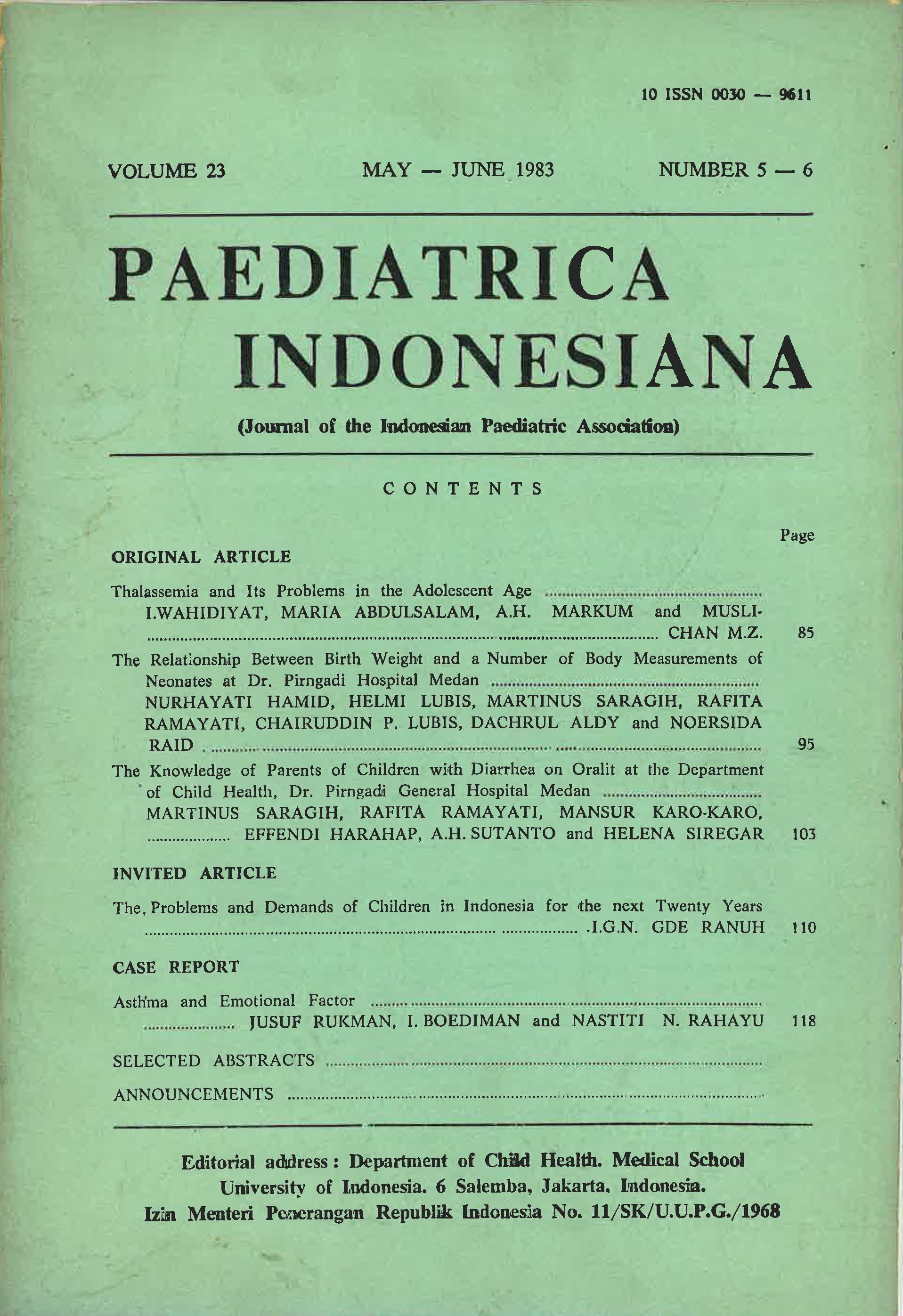The Problems and Demands of Children in Indonesia for the Next Twenty Years
Abstract
Indonesia as is the case with other developing countries has a "young" population of which 43% conists of a populatdon of underfifteen.
Since we know that these children will be the back bone of our nation in the future, efforts to support the endeavour to promote child health will be very beneficial for a long term program.
We ought to be happy that the long term health program in Indonesia is directed to the young and productive section of the community and attention is especially given to the low income section or to those in the rural areas.
References
2. HALlMAN, A. : "Indonesia: Community development through primary health care - the Banjarnegara experience", community action- family nutrition programmes, proceedings of a joint IUNS/UNICEF/ICMR Working Conference Held at the National Institute of Nutrition, Hyderabad, India, Oct. 1977.
3. MAHLER, H. : The meaning of "health for all by the year 2.000" World Health Forum, An International Journail of Health Development 1981, vol. 2, No. 1, pp. 5-22.
4. MOELJONO S. TRASTOTENOJO: "Beberapa masalah dan perspektif Kesehatan anak di Indonesia" Pidato pengukuhan, 1981.
5. MORLEY, D.: Pediatric priorities in the developing world, 1st Ed. p. 4 (Butterworth, London 1973).
6. RANUH, I.G.N.G. : Pendekatan risiko tinggi dalam pengelolaan pelayanan kesehatan anak. Continuing Education Ilmu Kesehatan Anak F.K. Unair/R.S. Dr. Soetomo Surabaya, No. 1 Juni 1980.
7. RANUH, I.G.N.G.: Nutrition Status of Elementary Schodl Children in Surabaya. Miruistry of Health, Centre for Research and Development p. 33.
8. RANUH, I.G.N.G. : Pola onfeksi di Bagian Ilmu Kesehatan Anak. Naskah lengkap I : Symposium penyakit infeksi 1979 F.K. Unair/R.S. Dr. Soetomo Surabaya, Hal. 156- 165.
9. TUMBELAKA, W.A.F.J. : Peranan Air Susu lbu (ASI) dalam pembangunan manusia Indonesia seutuhnya, Pidato pengukuhan, 1981.
Copyright (c) 2021 I.G.N. Gde Ranuh

This work is licensed under a Creative Commons Attribution-NonCommercial-ShareAlike 4.0 International License.
Authors who publish with this journal agree to the following terms:
Authors retain copyright and grant the journal right of first publication with the work simultaneously licensed under a Creative Commons Attribution License that allows others to share the work with an acknowledgement of the work's authorship and initial publication in this journal.
Authors are able to enter into separate, additional contractual arrangements for the non-exclusive distribution of the journal's published version of the work (e.g., post it to an institutional repository or publish it in a book), with an acknowledgement of its initial publication in this journal.
Published 2021-12-20













